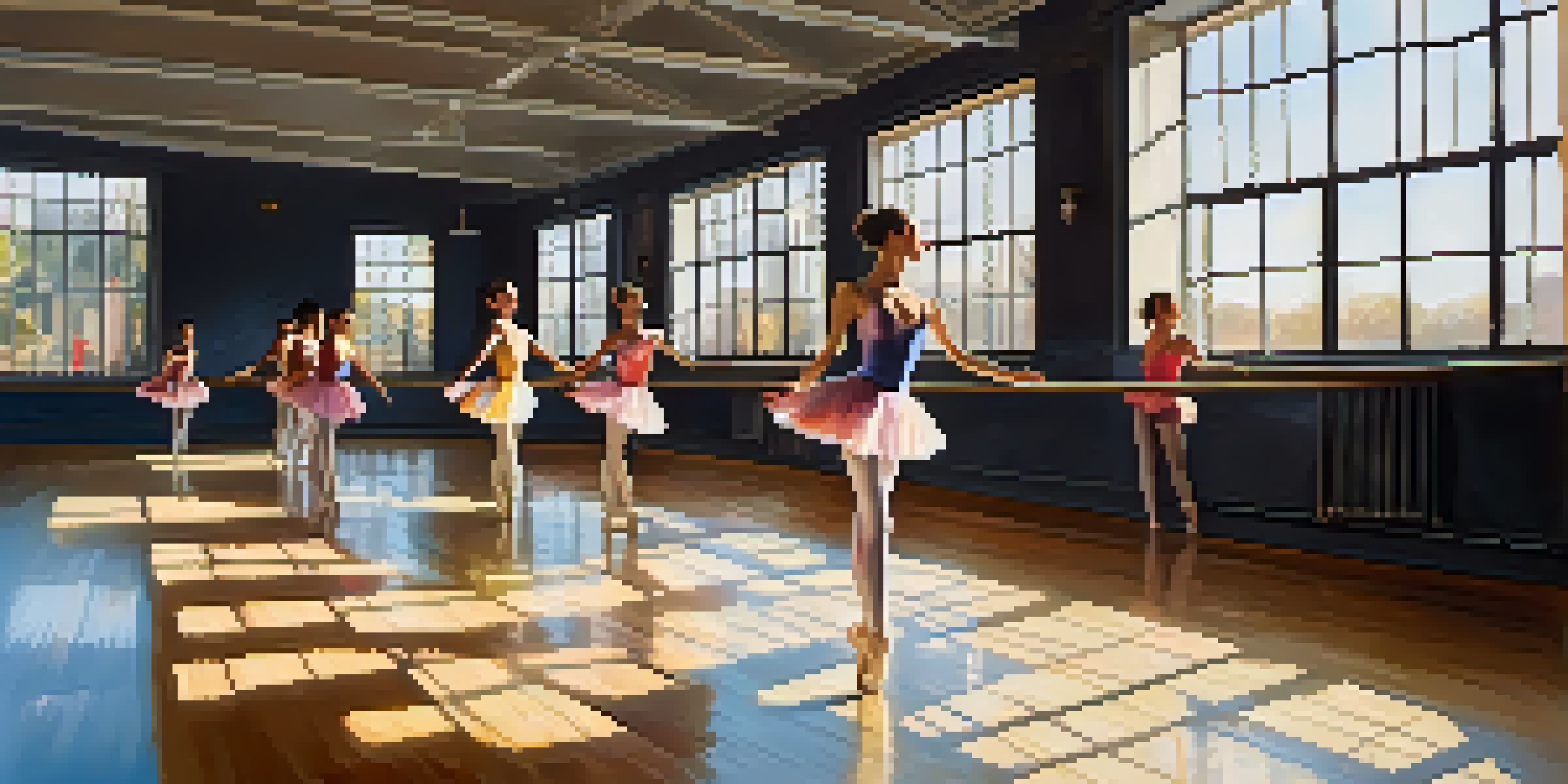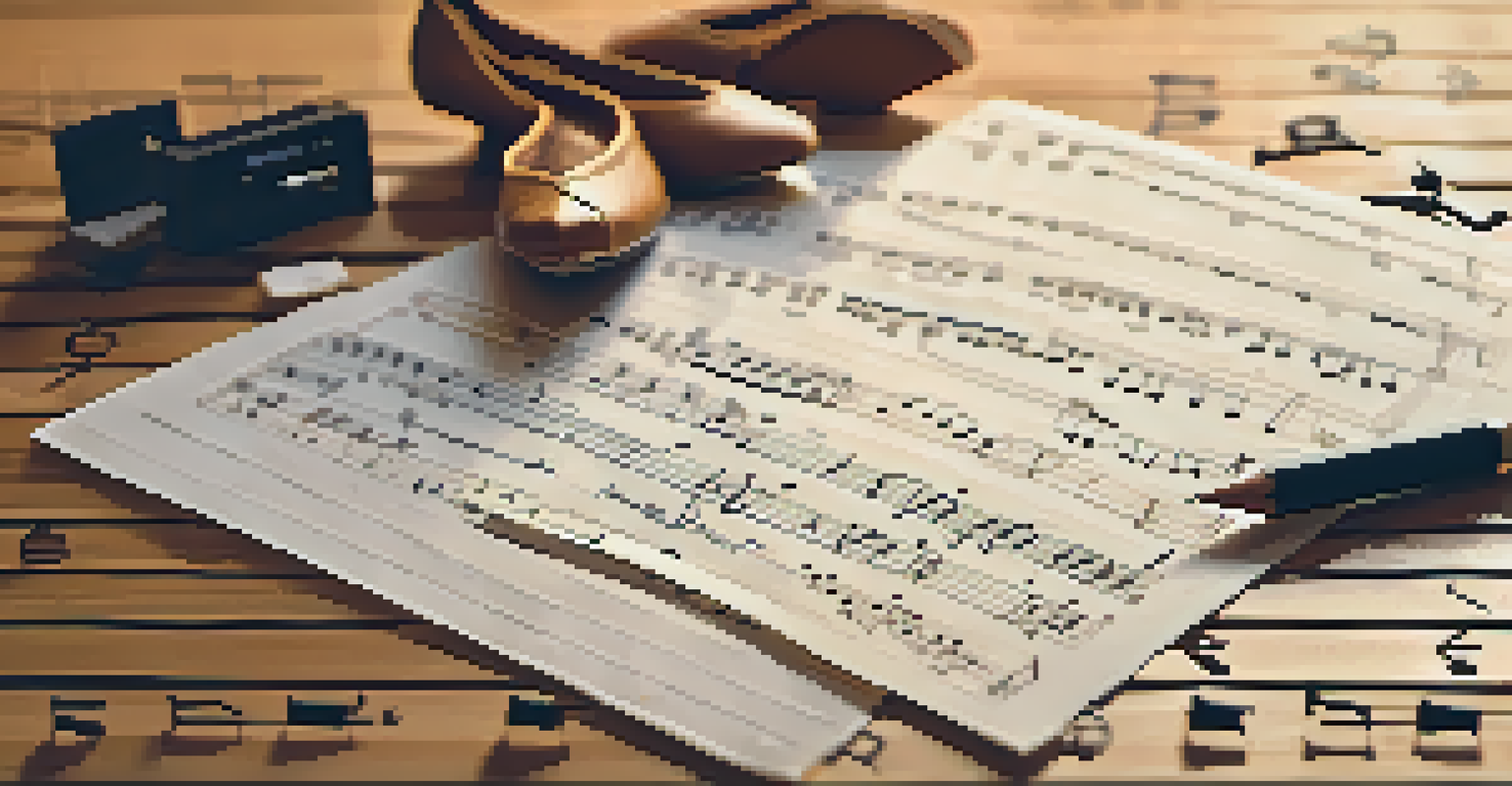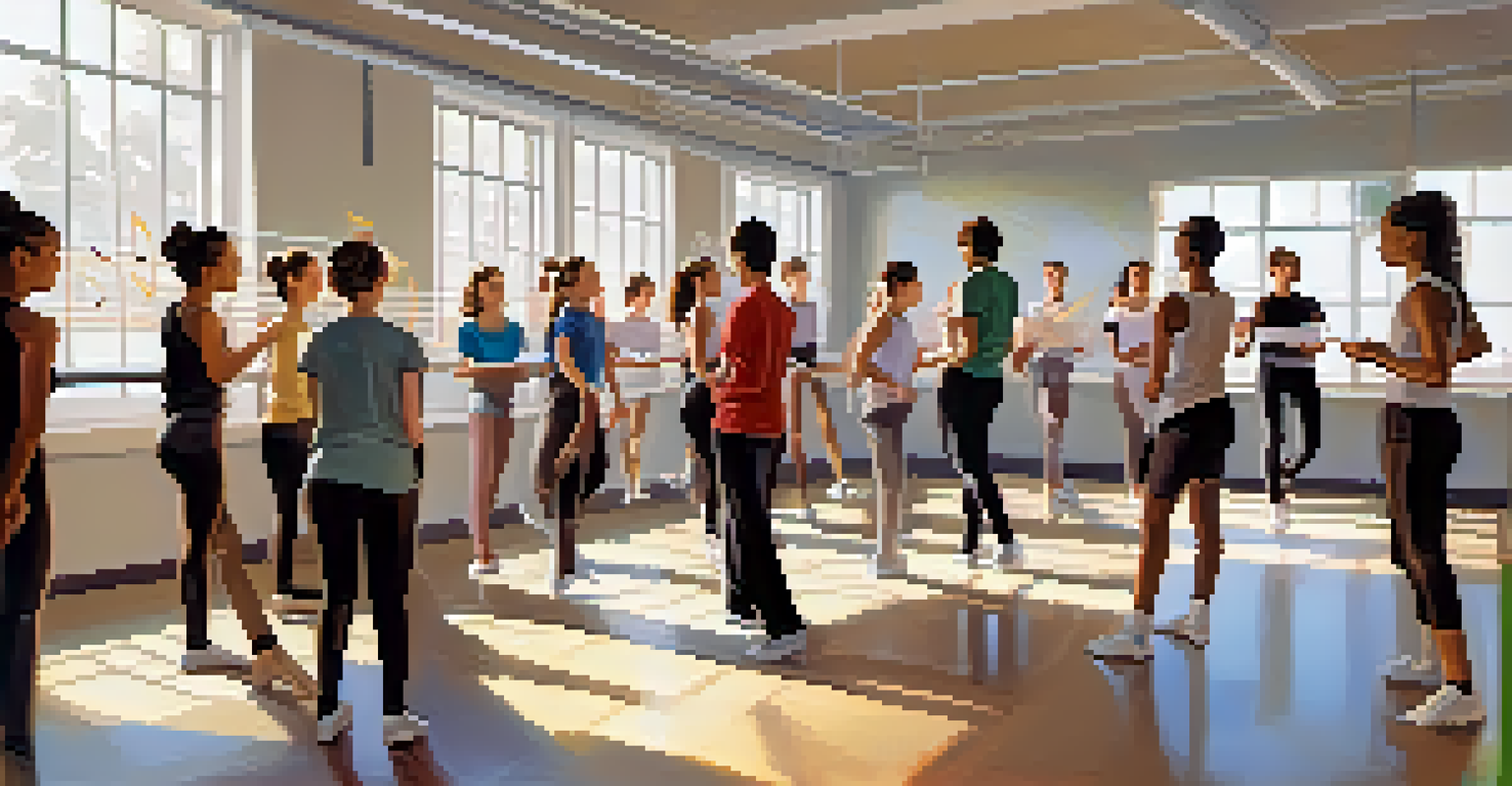The Importance of Dance Notation in Choreography Documentation

What is Dance Notation and Why Does It Matter?
Dance notation is a method for visually capturing the movements and sequences of a dance. It serves as a written record that can be interpreted by dancers and choreographers alike. Much like musical notation helps musicians understand how to play a piece, dance notation provides a framework for preserving choreography.
Dance is the hidden language of the soul.
Without dance notation, choreographers would struggle to communicate their work clearly, risking the loss of intricate movements over time. Imagine trying to remember a favorite recipe without writing it down—eventually, the details fade. Dance notation allows for the preservation of a dance piece, ensuring that it can be passed down to future generations.
Additionally, dance notation facilitates the sharing of choreography across various dance styles and cultures. It opens up opportunities for collaboration and innovation, allowing dancers to interpret and perform works that might otherwise be forgotten.
The Historical Context of Dance Notation
Dance notation has a rich history, dating back to the Renaissance when early forms began to emerge. The need to document dance became more pronounced in the 18th and 19th centuries as ballet gained popularity. One of the earliest systems was developed by Jaques-Dalcroze and later refined by figures like Rudolf Laban.

These systems evolved to meet the demands of the art form, with Labanotation and Benesh Movement Notation being two of the most prominent methods today. Each has its own unique symbols and rules, much like different languages, allowing for precise communication of dance movements.
Preserving Dance Through Notation
Dance notation serves as a written record that captures choreography, ensuring that intricate movements are preserved for future generations.
Understanding this historical context helps us appreciate the evolution of dance notation and its role in shaping modern choreography. As dance continues to evolve, so too does the need for effective documentation methods that capture the essence of this dynamic art form.
Benefits of Using Dance Notation in Choreography
One of the primary benefits of dance notation is that it provides a clear and concise way to document choreography. This means that dancers can learn and rehearse a piece without relying solely on memory or verbal instruction. For example, a choreographer can create a dance score that dancers can refer to, making the learning process more efficient.
The dance is a poem of which each movement is a word.
Moreover, dance notation fosters creativity by allowing choreographers to experiment with new ideas without the fear of losing their original work. They can rework or reinterpret pieces with the assurance that the notation serves as a reference point. This flexibility encourages innovation in the dance community.
Finally, dance notation plays a crucial role in archiving and preserving dance history. By documenting works accurately, future scholars and practitioners can study past styles and techniques, ensuring that the rich tapestry of dance continues to evolve while honoring its roots.
Challenges in Dance Notation
Despite its many advantages, dance notation is not without its challenges. One significant obstacle is the complexity of translating movement into written symbols. Some movements are nuanced and might not fit neatly into predefined categories, leading to potential misinterpretations.
Furthermore, not all dancers are familiar with reading dance notation, which can create a barrier in the rehearsal process. This lack of knowledge might result in reliance on traditional teaching methods, which could undermine the benefits of notation. Educating dancers about notation is essential for maximizing its effectiveness.
Educational Benefits of Notation
In educational settings, dance notation enhances learning by allowing students to analyze, document, and create choreography more effectively.
Lastly, the evolving nature of dance means that notation systems must adapt to new styles and trends. This can lead to discrepancies between different notational methods, making it difficult for dancers to transition between them. Ongoing dialogue within the dance community is necessary to ensure that notation remains relevant and accessible.
Dance Notation in Educational Settings
In educational environments, dance notation serves as a valuable tool for teaching and learning choreography. It allows students to engage with choreography in a way that deepens their understanding of movement and structure. For example, dance students who learn to read notation can analyze existing works and create their own pieces more effectively.
Using notation in the classroom also encourages critical thinking and enhances creativity. Students can experiment with their own movements while documenting them, fostering a sense of ownership over their work. This process not only nurtures individual expression but also builds a strong foundation for future choreographic endeavors.
Moreover, incorporating dance notation into curricula prepares students for professional opportunities in the dance world. Knowing how to read and write notation can set them apart in auditions and collaborations, providing them with a competitive edge in a field where communication is vital.
Technology's Impact on Dance Notation
Advancements in technology have greatly influenced the way dance notation is created and utilized. Digital platforms now allow choreographers to notate dances using software that can visually represent movements with greater clarity. This innovation makes it easier to share and collaborate on choreography, breaking down geographical barriers.
Furthermore, video recording technology complements dance notation by providing a visual reference that can enhance learning. Dancers can watch performances while following along with the notation, bridging the gap between the written and the performed. This combination enriches the learning experience and promotes a deeper understanding of choreography.
Technology Enhances Dance Notation
Advancements in technology provide new tools for creating and sharing dance notation, making choreography more accessible and collaborative.
As technology continues to evolve, we can expect new methods of notation to emerge, perhaps integrating augmented reality or interactive elements. This could revolutionize how we document and experience dance, making the art form even more accessible and engaging.
The Future of Dance Notation
Looking ahead, the future of dance notation holds exciting possibilities. As dance evolves, so too must the methods we use to document it. This means embracing new technologies and ideas while remaining rooted in the traditions that have shaped the art form.
Collaboration among choreographers, educators, and technologists will be essential in shaping this future. By working together, they can create innovative solutions that address the current challenges of notation, ensuring it remains relevant in a rapidly changing landscape.

Ultimately, the importance of dance notation in choreography documentation cannot be overstated. It is a vital tool for preservation, education, and creativity, allowing us to celebrate and share the beauty of dance for generations to come.